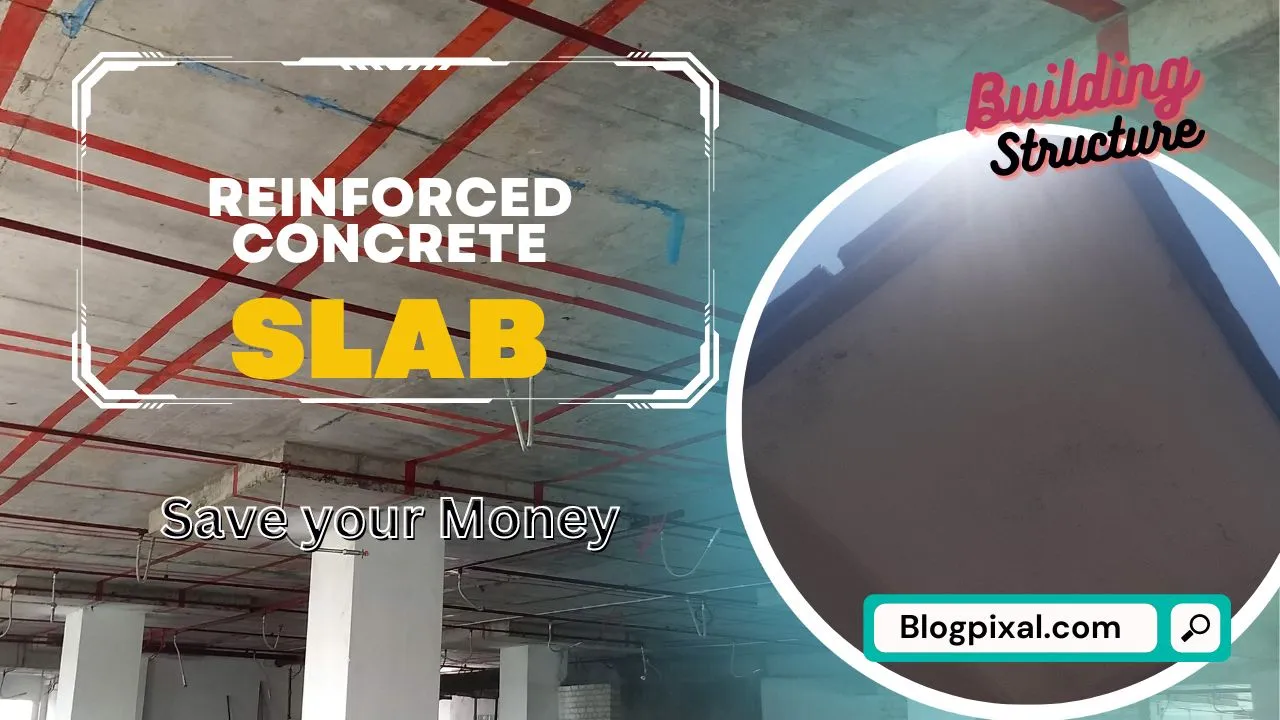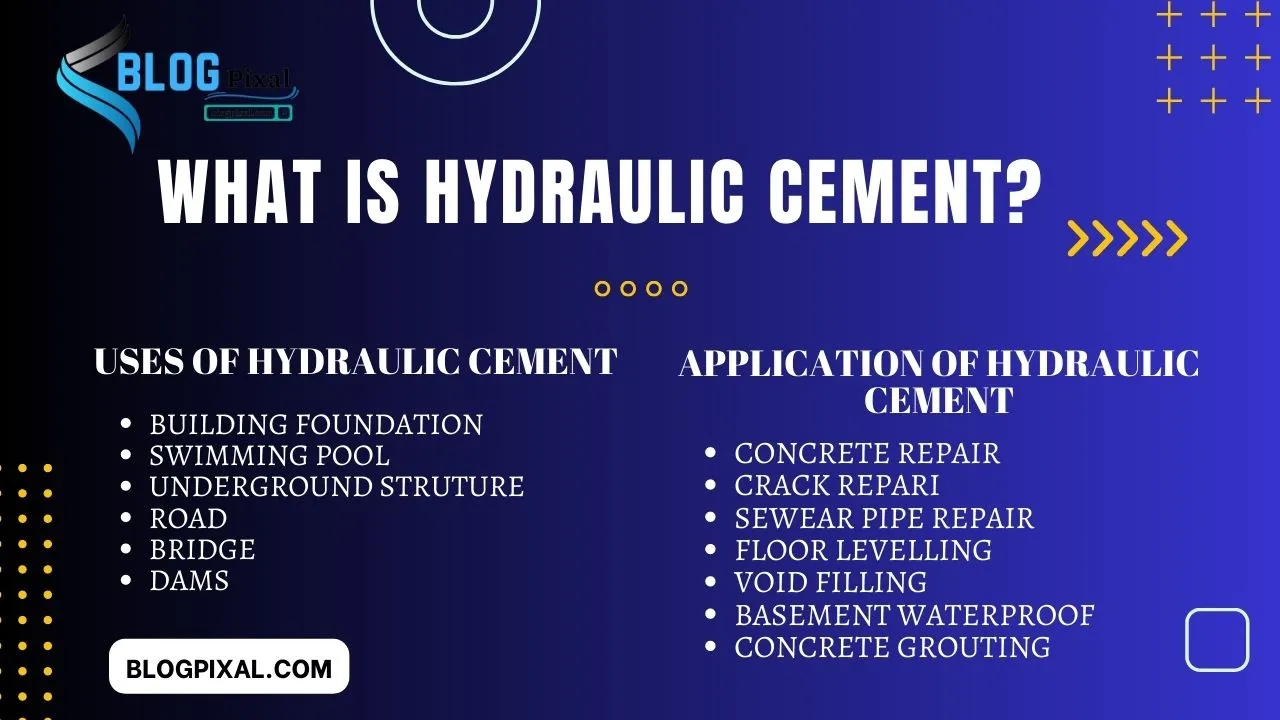Hi welcome to the next article. I hope you are very well, you know how to cast reinforced concrete slabs properly. Today we will explore all related Reinforcement casting tips and tricks.
If you are a civil engineer, contractor, and house owner, this is a very useful topic. The structural component is the main part of the building. Such as slab, beam, and pillar.
It is very important to follow the proper techniques and building guidelines/codes to get better strength, durability, and long-lasting.
But today we included all about slab casting. So without wasting time let’s get started:
What is a Reinforced concrete slab?
The reinforced concrete slab is a building structural component constructed for transferring flooring load to the foundation.
The slab is composed of concrete and steel reinforcement to improve strength and resistance to cracking on the slab.
Materials and Machinery for Slab Casting
Materials list for slab casting
- Steel billets
- Molds or casting beds
- Refractory materials
- Slag-forming agents
- Fluxes
- Alloying elements
- Oxygen lance for desulfurization
- Ladles for molten metal transport
- Tundish for continuous casting
- Water-cooling systems for molds and tundish
- Inoculants for grain refinement
- Thermocouples for temperature measurement
- Insulating materials
- Binders for mold coatings
- Slag pots for slag removal
- Ferroalloys for alloying
- Deoxidizers
- Flux-cored wire for metal treatment
- Casting powders
- Rollers for slab transportation
Machinery requires for slab casting
- Electric arc furnace (EAF)
- Ladle refining furnace (LRF)
- Vacuum degassing unit
- Continuous casting machine
- Mold oscillator
- Tundish car
- Strand guide
- Torch cutting machine
- Cooling beds
- Slab torching machine
- Slab handling crane
- Slab straightening machine
- Slab scalping machine
- Slab inspection system
- Slab transfer car
- Slab weighing system
- Slab bundling machine
- Slab wrapping machine
- Slab marking equipment
- Slab stacking machine
The basic principle of Reinforced concrete slab
The following are the basic principles of reinforced concrete slab, please review them carefully:
Load Distribution
Reinforced concrete slabs distribute the weight of the building and live loads over a larger area. This helps minimize concentrated stress points and ensures the stability of the structure.
Tensile Strength
Concrete has excellent compressive strength but is relatively weak in tension. Steel rebars are used in the concrete slab to enhance its tensile strength. The Reinforcement carries tensile forces and resists cracking or failure of the slab.
Bonding Between Concrete and Steel
The bond between concrete and steel reinforcement is important for transferring loads effectively. The rebars need to be appropriately used in the concrete slab to ensure a strong bond and prevent slippage or separation.
Reinforcement Placement
The placement of reinforcement in the concrete slab is determined by engineering design and load requirements. The rebars should be positioned correctly to maximize their effectiveness in resisting tensile forces and providing structural Load-carrying capacity.
Spacing and Cover
Proper spacing between rebars and adequate concrete cover is essential. The spacing secures uniform load distribution, while the concrete cover protects the rebars from corrosion and provides fire resistance to the structure.
Structural Analysis
Before designing a reinforced concrete slab, structural analysis is conducted to determine the required thickness, reinforcement layout, and overall dimensions. Structural analysis ensures that the slab can withstand the Possible loads and meets safety standards.
Construction Techniques
Attention to detail is crucial during the building of reinforced concrete slabs. Correct formwork construction, accurate reinforcement placement, proper concrete pouring processes, and suitable consolidation methods all contribute to the completed slab’s integrity and strength.
Engineers and construction experts may design and install reinforced concrete slabs that exceed structural norms and assure long-term durability by knowing these fundamental principles.
Benefits of Reinforced concrete slab:
The following are the benefits of Reinforced concrete slabs:
- Provides structural support and stability.
- Loads are distributed uniformly.
- Load-bearing capability is increased.
- Bending and deflection resistance.
- Increases the durability and lifespan.
- It protects against cracking and shrinking.
- Supports large machinery and equipment.
- Allows for more adaptable architecture designs.
- Fire resistance is provided.
- Thermal mass is provided for energy efficiency.
- Serves as a foundation for flooring materials.
- Allows for simple maintenance and cleaning.
- Water intrusion is prevented.
- Makes a flat, level surface.
- It bears the weight of the walls and partitions.
- Allows for the effective utilization of space in multistory buildings.
- Insulates against sound.
- Impact and abrasion resistance.
- Allows utilities and services to be installed.
- Improves the overall framework.
Initial tips for Preparing for the concrete slab casting
Preparing for the casting of a concrete slab is an important stage in ensuring a good and long-lasting product. Adequate planning will assist in speeding up the construction process and reducing potential problems. Here are some crucial actions to take:
Site Inspection
Begin by carefully examining the location where the concrete slab will be cast.
Check for any obstacles uneven terrain, or other hazards that may disrupt the construction process.
Addressing these difficulties in advance will aid in the creation of an appropriate slab foundation.
Soil Testing
It is essential to evaluate the soil conditions at the building site.
Soil testing is required to assess the load-bearing capability and the suitability of the soil for supporting the concrete slab.
This information will be utilized to impact the slab’s design and ensure its strength and durability.
Permits and Approvals
Check with the local authorities to see whether the building project requires any permissions or approvals.
Building norms and standards must be followed in order to maintain safety and prevent legal difficulties.
Concrete Quantity Calculation
Calculate the precise amount of concrete needed for the slab. Consider size, thickness, and any extra reinforcements required.
Delays and cost overruns might occur if the concrete amount is overestimated or underestimated.
Reinforcement Planning
Plan the location and arrangement of reinforcing bars if the concrete slab requires reinforcement.
To guarantee optimum rebar location and spacing, adhere to technical standards and design drawings.
This stage is crucial for increasing the slab’s strength and load-bearing capability.
Material Procurement
Arrange for the procurement of high-quality materials, including concrete, reinforcement bars, formwork, and curing compounds.
Make sure that the materials meet the required standards and are delivered to the site on time.
Weather Considerations
When scheduling the concrete slab casting, consider the weather.
Extreme temperatures, rain, or high humidity can all have an influence on the quality and curing of concrete.
Plan the building operations properly to avoid any negative consequences.
Safety Precautions
Prioritize safety throughout the planning phase and throughout the building process.
Provide all personnel with the essential personal protective equipment (PPE), develop safety practices, and maintain a hazard-free working environment.
How to Create a formwork properly and safely?
The formwork is an essential first stage in the casting of a concrete slab. The formwork acts as a temporary mold for the slab, determining its shape and size. It supports the fresh concrete till it hardens and has appropriate strength. The following are the main factors to consider when developing the formwork:
Design and Measurements
The architecture and structural design and Specifications should be followed to determine the dimensions and shape of the slab. Ensure that the formwork aligns with the desired dimensions, including length, width, and thickness.
Formwork Material
Select suitable materials for the formwork based on the project requirements. The Common options are timber, plywood, metal, or plastic. The material should be sturdy, durable, and capable of withstanding the pressure exerted by the wet concrete.
Support and Bracing
Provide adequate support and bracing to ensure the stability of the formwork. Install vertical and horizontal supports at regular intervals to prevent the formwork from bending or deforming during the consolidation of the concrete.
Levelling and Alignment
Ensure that the formwork is level and properly aligned with the desired position of the slab. Use a spirit level and measuring tools to check for accuracy. Any discrepancies in leveling or alignment can affect the outcome of the slab. You can use Auto level to accurately measure leveling and alignment.
Sealing and Reinforcement
Seal the joints and edges of the formwork to prevent leakage of the concrete mix. This helps maintain the desired shape and prevents the concrete from seeping out. Additionally, if required, incorporate reinforcement elements, such as steel bars or mesh, within the formwork for added structural strength.
Accessibility and Openings
If the slab requires penetrations or openings for utilities, plan and create appropriate holes or voids in the formwork. These openings should be accurately positioned and aligned with the design requirements. Ensure that they are reinforced or adequately supported to maintain the integrity of the slab.
Formwork Removal Considerations
Plan for the removal of the formwork once the concrete has cured sufficiently. Consider factors such as the concrete’s strength, curing time, and weather conditions. Follow the recommended guidelines to avoid damaging the slab during formwork removal.
When building the formwork, remember to take all necessary safety precautions. Provide proper support, use appropriate tools, and ensure the structure’s stability. Properly constructed formwork contributes to the quality and accuracy of the concrete slab.
Tips for placing reinforcement before concrete casting
- Follow the engineering design and specifications for the reinforcement layout.
- Ensure proper cover (distance between rebars and the surface) as per design requirements.
- Use the correct size and grade of reinforcement bars.
- Position the rebars accurately, considering their spacing and lap lengths.
- Securely tie or wire the rebars together at intersections to maintain their position during concrete placement.
- Use chairs or spacers to elevate the reinforcement off the ground and maintain the desired concrete cover.
- Install additional reinforcements, such as stirrups or beams, as specified for load-bearing areas.
- Consider expansion joints or movement requirements and provide proper reinforcement detailing.
- Avoid overlapping or crossing of rebars in congested areas to prevent interference during concrete placement.
- Inspect the reinforcement placement for accuracy and compliance with the design before proceeding with concrete casting.
These tips will help ensure the proper placement of reinforcement, enhancing the structural integrity and strength of the concrete slab.
Pouring and consolidating the concrete
Here are some tips for pouring and consolidating the concrete during the construction process:
♥ Prepare the concrete mix according to the design specifications and recommended ratios of cement, aggregates, and water.
♥ Start pouring the concrete from one end of the formwork and work systematically to ensure even distribution.
♥ Use a chute, wheelbarrow, or pump to transfer the concrete from the mixer to the formwork, depending on the accessibility and distance.
♥ Avoid pouring concrete from a height that may cause segregation or displacement of aggregates. Pour it gently to prevent the formation of air pockets.
♥ Consolidate the concrete using appropriate tools such as vibrators or tampers. This helps remove air voids and ensures proper bonding between the concrete and reinforcement.
♥ Pay attention to the consolidation process, especially in congested areas or around embedded items like rebars or utilities.
♥ Use internal vibrators for larger slabs or structures and surface vibrators for smaller areas or narrow spaces.
♥ Ensure that the concrete reaches all corners and edges of the formwork, eliminating any voids or gaps.
♥ Maintain a consistent rate of concrete placement and consolidation to prevent cold joints or weak sections.
♥ Keep the surface of the concrete slightly above the formwork to allow for finishing and leveling.
♥ Avoid overworking the concrete during consolidation, as excessive vibration can lead to segregation or settlement of aggregates.
♥ Periodically check the level and alignment of the formwork during the pouring and consolidation process to ensure accuracy.
♥ Follow the recommended curing procedures immediately after concrete placement to prevent premature drying or cracking.
Finishing the Concrete Surface
Leveling the surface is the first step in the finishing process after pouring and solidifying the concrete. To spread the concrete uniformly throughout the formwork, use a ruler or a screed board. To obtain a flat surface, use a back-and-forth sawing action with the screed board.
Floating
After the surface has been leveled, use a float to smooth and compact the concrete.
A float can be constructed from wood, magnesium, or aluminum.
Working from one end to the other, move the float in a circular or sweeping manner.
This procedure aids in the removal of small flaws and brings fine aggregates to the surface.
Edging
Using an edging tool, create clean and defined margins around the perimeter of the concrete slab. This tool is available as a hand-held or a walk-behind edger.
To create a smooth, rounded edge, run the edger around the edges, slightly slanted towards the concrete.
Jointing
Cut contraction or control joints into the concrete as needed. These joints aid in the prevention of cracking caused by shrinkage and temperature fluctuations.
To make straight lines or patterns in the surface, use a grooving tool or a jointing trowel. For joint spacing and depth, adhere to the design standards.
Troweling
Once the concrete has cured sufficiently to hold weight, start troweling to obtain a smooth, polished surface.
Begin by working in a circular or figure-eight motion using a steel hand trowel or a fresno trowel.
For bigger areas, gradually graduate to a motorized trowel, often known as a helicopter or power float. Troweling compacts the surface and smoothes it out.
Broom Finish (Optional)
Apply a broom finish to places where a non-slip surface is desirable, such as driveways or outdoor walks.
Wait for the concrete to harden up somewhat after troweling. Then, using long, steady strokes, drag a broom across the surface.
This adds texture and improves traction.
Final Curing
Proper curing is critical for the concrete’s long-term strength and endurance. To avoid quick moisture loss, use a curing agent or cover the surface with a curing membrane.
Follow the curing time and techniques specified for the concrete mix.
Wear adequate protection equipment, such as gloves and knee pads, when completing. Work in parts as well to achieve a uniform finish throughout the whole area.
Curing and Maintenance of Concrete
Reinforced Concrete Slab Curing:
Initial Curing
Begin the curing process immediately after finishing the concrete surface. Cover the freshly cast slab with a curing agent or use a curing barrier to prevent quick moisture loss. These materials provide a barrier that keeps moisture in the concrete and encourages optimal hydration.
Moisture Retention
It is critical to maintain the concrete surface continually moist for a lengthy period of time to guarantee proper curing. This can be accomplished by spraying the slab with a fine mist of water or by draping wet burlap or plastic sheets over it. To avoid drying out, reapply moisture as needed.
Curing Time
Typically, the curing process lasts at least seven days. However, continued curing for up to 28 days is suggested for best strength growth and longevity. Follow the curing time limits indicated by the concrete mix manufacturer or in the project specifications.
Temperature Control
Maintain proper temperatures during the curing process. Avoid exposing the slab to excessive heat or cold, since this might reduce the strength and durability of the concrete. To manage temperature variations, use insulating blankets or temporary shelters, especially in hot or cold situations.
Reinforced concreted slab maintenance:
Cleaning
Clean the surface of the reinforced concrete slab on a regular basis to remove dirt, debris, and other potential pollutants. Rinse with water after using a light detergent or a concrete cleaner. To avoid damaging the concrete surface, avoid using strong chemicals or abrasive cleaning products.
Inspection
Inspect the concrete slab on a regular basis for symptoms of cracking, spalling, or damage. Examine the exposed reinforcing bars for corrosion or degradation. Address any flaws detected during the examination as soon as possible to avoid further harm.
Repair and maintenance
If any fractures or damage are discovered, they must be repaired as soon as possible to ensure the integrity of the reinforced concrete slab. Depending on the severity of the damage, restoration procedures may include epoxy crack filling or patchwork. If major repairs are necessary, seek the advice of an expert.
Sealing
For further protection, consider adding a concrete sealer to the slab’s surface. A sealer aids in the prevention of moisture entry, discoloration, and degradation due to environmental causes. Sealers may require frequent maintenance, therefore follow the manufacturer’s directions for correct application and reapplication.
Avoid Chemical touch
Avoid coming into touch with chemicals that can corrode the reinforcing bars or deteriorate the concrete surface. This involves preventing spills of acidic chemicals on the slab, such as strong acids or caustic solutions. If exposure occurs, clean and neutralize the affected area as soon as possible.
You can maintain the lifetime and durability of the reinforced concrete slab by following suitable curing techniques and executing frequent maintenance.
Read more
Conclusion
Finally, properly casting and reinforcing a concrete slab is essential to its strength, durability, and lifespan. You may obtain a high-quality concrete slab by following the specified methods, such as accurate preparation, right reinforcement installation, and accurate concrete pouring and finishing techniques. Furthermore, meticulous curing and frequent maintenance will help to maintain the slab’s integrity over time. Remember to follow safety precautions and seek expert help when required. With these techniques in place, you may enjoy a well-built reinforced concrete slab that fulfills the specifications of your project.
FAQs
How long does the concrete slab take to cure?
The normal curing time for a concrete slab is seven days. However, continued curing for up to 28 days is suggested for best strength growth and longevity.
What is the function of concrete slab reinforcement?
Reinforcement, such as steel bars or mesh, improves a concrete slab’s structural strength. It aids in weight distribution, resistance to cracking and bending, and overall stability and durability.
How thick should a concrete slab be for residential use?
The thickness of a residential concrete slab might vary based on factors such as planned usage, soil conditions, and local construction requirements. Residential slabs are typically 4 to 6 inches thick.
Can I pour concrete in freezing temperatures?
Yes, concrete can be poured at freezing temperatures. To prevent freezing, extra care must be taken, such as utilizing proper insulation, heating the components, and adding admixtures to hasten the cure.
How frequently should I check and maintain my concrete slab?
It is advised that the concrete slab be inspected on a regular basis for cracks, spalling, and other symptoms of degradation. Cleaning and mending are examples of maintenance operations.
What is the Minimum reinforcement in slab?
The minimum reinforcement in a slab is typically specified as a percentage of the cross-sectional area, which is generally around 0.15% to 0.20%










